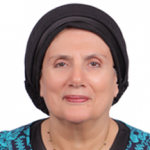Gender dimensions of poverty are addressed, using the recent Household Expenditure, Income and Consumption Survey of 1999/2000 for Egypt. Disparities between males and females living in poor households were assessed. Poverty measures of males and females were found to be significantly different, in both urban and rural areas, where higher levels are observed among females than males. Poverty is more prevalent in Upper Egypt, where poverty measures are twice as large as the national level. The poor, both men and women are uneducated, out of labor force or unemployed, work in the private sector, have higher percentage of child labor. According to logistic regression, females are more likely to be poor than males, holding other factors constant. The probability of being poor increases as the number of individuals who work in agriculture or services and/or are illiterate increases. Female-headed households are smaller in size, have lower individual per earner ratio, and have higher per capita expenditure and income.

Research Fellows
Heba El-Laithy
Professor of Statistics at Cairo University’s Faculty...


